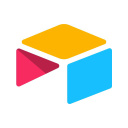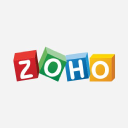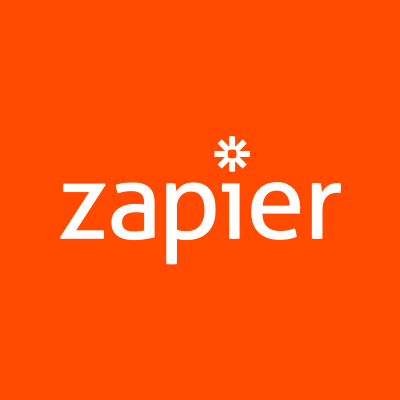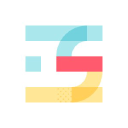
How I Started A $80K/Month Business Connecting Freelancers With Companies
Hello! Who are you and what business did you start?
Hi, I am Suvansh Bansal and I am the co-founder of Flexiple. We started Flexiple in Nov’15 to build a freelancing platform that enables “quality interactions” between companies and freelancers. The goal has since then been to ensure a successful engagement such that both the client and the freelancer are happy and satisfied at the end of the engagement.
Over the years, the freelancing market had evolved such that platforms focus more on reviews and ratings as the metric to measure quality. These metrics work well when the service provided by a worker is commoditized, replicable but not when the service depends hugely upon the type of skill and expertise of the freelancer. This realization led us to start Flexiple as we only decided to have the “best” freelance developers and designers as a part of our community.
We figured that while such platforms did exist outside India, a lot of them were pretenders as building such a platform requires a very patient state of mind during execution, something that ventures capital-funded businesses find difficult to cultivate. Thus, post our graduation we made the call to not look out for external investment till the time it is absolutely needed. The inherent positive unit economics of the business obviously helped us make this decision.

Flexiple’s offering is great for tech entrepreneurs, product leaders, engineering heads at scaling startups who cannot spend some weeks waiting for the right freelancer to apply on their job post as with us all they have to do is answer 5 questions. And we will have them speaking with the right freelance talent within 7 days.
Since operationalizing ~3 years ago, we have helped 85+ startups identify, hire, and work with the right freelancer for over 200 engagements. All this has been made possible with the help of our 225-member strong community of self-employed developers and designers.
What's your backstory and how did you come up with the idea?
Flexiple is my first foray into entrepreneurship. Though, being a third-generation entrepreneur, I reckon I always had the zeal to build something of own. However, at the beginning of my career, I took the traditional route and worked at 2 MNCs for ~3 years.
My zeal to learn faster, however, led me to join IIM Ahmedabad - India’s top-ranked B school in June’15 and that is where I met my partners and Flexiple’s co-founders - Karthik and Hrishikesh. During my time at IIM A too, surprisingly, I was dissatisfied with the learning opportunities available as textbooks and in-class discussions were the only media available.
Whereas what I wanted was to get my hands dirty and implement the theory we were learning in class. After a couple of false starts, I decided to join the two of them. They had already been working on defining Flexiple’s vision for almost a year by Aug’16 while juggling course-work during our first year of MBA.

Rather than join them full-time, I started out as just a helping hand. At that time, Flexiple’s focus was on 3 categories - software development, digital product design, and content writing. And we picked a category each and started working on our plan to have a 30-member strong talent pool in each by the time we graduate. Though the chemistry the three of us had in the first 3 months was great and we ultimately decided that I should join as a co-founder rather than continue working as a helping hand.
A sustainable business can only be built with a combination of luck, timing, and hard work.
In parallel, we also began working on building a 2-sided platform where companies could post projects, review recommended freelancers, and manage them and freelancers can apply to those projects post-completion of the onboarding process, interact, and get paid. Building this platform proved to be the costliest mistake we have made to date.
Take us through the process of designing, prototyping, and manufacturing your first product.
The 8-month period from August’16 to March’17 was very important as we were laying the ground for launching the platform. The three of us researched, spoke with multiple stakeholders, to build a testing mechanism for all three categories. This process fed the product development cycle which was led by Hrishikesh, a freelance designer, and 2 freelance engineers.

Flexiple’s first version had an automated testing platform
Eventually, it turned out that building the platform and the assessment engine was the easy part. The more difficult part was to get freelancers to use it to go through assessments. One of the biggest blockers we faced was a lack of projects at hand as not many freelancers wanted to trust another platform for we might turn out to “pretenders” like others.
As it transpired, neither the freelancers not companies wanted to use the platform we had built-in 8 months and spent $8,000 on. However, it became clear to us that the quality problem rampant in the freelancing industry is not a tech problem but rather an execution and process problem, and that is where our approach of hitting the market with a fully developed solution failed. We changed course accordingly in June’17 and stopped using the platform for good.

Describe the process of launching the business.
With a failed product launch behind us and having learned a few harsh lessons along the way, we shifted our focus to having a few successful engagements executed with the model we had in mind. We found the first set of clients from our own personal networks and by reaching out to clients trying out other “pretender” platforms. From this set, we realized that most of the market looking for quality is also looking for reliability and thus, only full-time or self-employed freelancers would be right for them.
I am a firm believer that remote is the future of work and no-code is the future of startups.
Not only did our decision to onboard only independent professionals help us differentiate ourselves in a crowded market, but we were also able to narrow down the kind of clients we were on the lookout for. We also found that most of the self-employed professionals viewed platforms such as LinkedIn or AngelList as a consistent source of projects but lose out on the good ones in the sea of proposals they receive. Thus, we focused mainly on these 2 platforms as a supply source.
And the biggest problem we have solved for the freelancers since then is of reducing the amount of time they spend talking to prospective clients. We also tweaked our onboarding process such that we require a minimum amount of investment from freelancers till the time we get a project relevant to them and only then do we finalize the onboarding. This model of onboarding freelancers has been working well for us and helped us attain high satisfaction ratings from our community members to the extent that referrals and inbounds have become two of our biggest sources.
Keeping both the clients and freelancers had been a key metric for us since the first project we worked on as our revenue model is aligned to the engagement success and it helps us increase the lifetime value of both sets. Since June’17, we have executed ~200 such engagements have achieved a satisfaction rating of 8+ for more than 93% of them. This has helped us maintain long-term relationships with our clients and build partnerships with our community.
Since launch, what has worked to attract and retain customers?
Once we had exhausted our personal network, we focused on cold email outreach as ours is a niche B2B business with a big-ticket size ($2,500+). We structured the process such that we focused primarily on leads who matched our ideal customer profile, personalized our messaging in the first email and subsequent emails to appeal to them, and regularly got new leads using platforms such as LinkedIn.
However, due to the inherent limitations attached to cold outreach processes, we started focusing on inbounds too in July 2018. We started our inbound lead generation process by using content marketing and over a period of 3 months figured that the biggest common motivator for both clients and freelancers was their inclination towards working remotely. And our conversations with this audience-led us to believe that selecting the right tool for their use-case from the plethora available in the market was their biggest challenge.
Given we had been managing a remote team for over 12 months by Sep’18, we had a list of tools split across 20 categories that the team had been using. We built a basic WordPress website and shared a curated repository of 100+ remote tools across 24 categories and launched on Product Hunt and were voted as the #2 Product of the Day. The success of Remote Tools is evident from the 4 clients we converted with its launch attaining an ROI of 1000%.

Apart from launching such products on Product Hunt, we have focused a lot on SEO and content marketing. In 2019, we worked on ensuring that Flexiple ranks high on relevant keywords and our brand is present on platforms where startups usually search for freelancers. For the past 12 months, the revenue-split has been 50:50 from our sales and marketing efforts.
Retaining customers to have mostly been around easing the process and as most of the startups we work with a lookout for a full-time freelancer for a period of 6+ months, it becomes very important for us to ensure that the engagement starts on a good note. Thus, over the course of the engagement, a Customer Success Manager from the team is consistently in touch with both the client POC and the freelancer to ensure that their goals (aligned on before kick-off) are being met. This high touch-point customer support has been an important factor in making clients stick with us as it helps bridge the trust gap that usually exists at the start of the engagement.
Apart from that, we also use a host of third-party automation tools to ease the engagement process. We also have a few internal tools to improve customer experience. One such tool is the Resume App where we showcase the capabilities of each of our community members to prospective clients in a concise yet exhaustive manner. Goes without saying that all our tools are built with the help of our community of full-time freelancers.

How are you doing today and what does the future look like?
Today, we are a customer-funded profitable business and have been generating $80K in gross monthly revenues on an average over the last 6-months. The focus in 2019 had been on building a team, along with sales and marketing processes that would help us sustain the business and reattain the quarter on quarter growth rate (40%) we had consistently achieved in the first 2 years.
Starting with a 4-member team at the start of the year, we now have a well-knit 9 member team and are set to grow into a 13-member team in the next couple of months. This should give us enough fire-power to reach our goal of being able to predict our revenues for the subsequent quarter by the end of 2020. We intend to do this by deepening our expertise in cold outreach, paid marketing (Google Ads), and supplement those efforts with content marketing.
Having helped 80+ startups identify, hire, and work with quality tech talent we have realized that startups usually continue with a full-time hiring outlook while hiring remote talent. What they miss is that the motivations of a remote contractor are completely different from that of a full-time hire. Apart from sharing this expertise we have developed around tech hiring, we also share our community’s tech expertise on our blogging platform.
Apart from the core offering of Flexiple, 2020 is also a big year for remote tools as we widen our focus and build it into a fully free content hub for remote makers and workers. These are the 2 areas that we are focusing on at the moment. Long term, our goal is to be a one-stop solution for teams looking to hire and work with all kinds of remote talent.
Through starting the business, have you learned anything particularly helpful or advantageous?
I am a firm believer that remote is the future of work and no-code is the future of startups.
Quality talent is not short of options today and long-gone are the days when compromising on personal life by moving cities, traveling a couple of hours for work was the norm. Both startups and enterprises value a productive employee over an in-front of your employee. It is this evolution that has become the backbone of Flexiple and Remote Tools. And you also see multiple such products catering to the remote working audience being launched almost on a daily basis.
On the other hand, no-code tool makers have taken confidence from the success of low-code tools such as Wordpress. The ecosystem has become so powerful that a startup as successful and impactful as Lambda School runs only on no-code tools. Even we use mostly use such no-code tools as much as possible and only write custom code when absolutely necessary.
What platform/tools do you use for your business?
We use a lot of tools to run our business. A few of them are no-code tools that have been highly valuable to build MVPs and automate manual processes -
- Airtable - forms, databases
- Gmail - email client
- Google AdWords - Ads
- Zapier - automation tool
- Slack - communication
- Slite - documentation
- Zoho - CRM
- Freshsales - Sales CRM
- WordPress - Web Pages
- Mailchimp - Communication
- Hubspot - Sales
- Unicorn Platform - Landing pages
- OptiMonk - Lead generation
What have been the most influential books, podcasts, or other resources?
I have found myself going back to Ben Horowitz’s “The hard thing about hard things” for inspiration again and again since I first read it in 2018. It is one of the very few books that have actionable advice coming from a man who has built sustainable businesses from the ground up.
On Twitter, I really like interesting tidbits shared by Paul Graham, as well as his blogs. While they are not highly actionable, they do make me think about the problems faced by me as an entrepreneur deeper.
I also like listening to the Indiehackers podcast and have found stories of other self-funded startups inspiring and helpful to explore different strategies. Apart from this, I am always on the lookout for highly actionable advice on sales and marketing which Saleshacker, Gong, consistently provide me with.
Advice for other entrepreneurs who want to get started or are just starting out?
The two biggest pieces of advice I would give to any entrepreneur is to value their own time and to build a business for the long-term.
Time is the most valuable asset an entrepreneur has. I have seen many founders getting stuck with the most operational of tasks as they give you the satisfaction of getting things done. While it might seem rude or unprofessional to not reply to every email you receive, it is important to delegate effectively, especially as your company grows.
Thus, forward emails to your team, use your phone as minimally as you can, mute notifications on Slack, or Discord. And focus on moving your company forward and spend time on the strategy of the company, hiring and training new hires, upskilling your colleagues, and implementing new initiatives.
In the same vein, entrepreneurs sometimes focus more on short-term gains and not on potential long-term ones. A sustainable business can only be built with a combination of luck, timing, and hard work. It is the luck and timing aspect that you need to keep an eye out on. Thus, be open-minded in your conversations and always look at a conversation keeping in mind a 1-year horizon.
Are you looking to hire for certain positions right now?
We are always hiring and are currently looking for a couple of quick learners to join the team to lead new initiatives at Flexiple. We are also looking for a talented content writer to help us grow our blog (around freelancing, remote work, tech hiring) and also to write copies to promote them on social media platforms.
While we are looking for full-time hires, we are fine with exploring the chance to work with freelance/ part-time writers who have past experience working in an environment with a minimum direction and are problem-solvers at heart.
Finally, we are looking for folks based in the US, UK, Germany who know or want to learn B2B sales to work with us on a commission basis.
If you are interested or know anyone who might be interested, am waiting to hear from you over email.
Where can we go to learn more?
Feel free to reach out to me on any of the above forums to discuss tech hiring, building a self-funded business, and B2B sales.
If you have any questions or comments, drop a comment below!

Download the report and join our email newsletter packed with business ideas and money-making opportunities, backed by real-life case studies.

Download the report and join our email newsletter packed with business ideas and money-making opportunities, backed by real-life case studies.

Download the report and join our email newsletter packed with business ideas and money-making opportunities, backed by real-life case studies.

Download the report and join our email newsletter packed with business ideas and money-making opportunities, backed by real-life case studies.

Download the report and join our email newsletter packed with business ideas and money-making opportunities, backed by real-life case studies.

Download the report and join our email newsletter packed with business ideas and money-making opportunities, backed by real-life case studies.

Download the report and join our email newsletter packed with business ideas and money-making opportunities, backed by real-life case studies.

Download the report and join our email newsletter packed with business ideas and money-making opportunities, backed by real-life case studies.


























